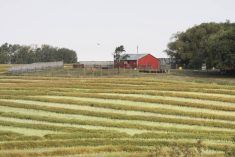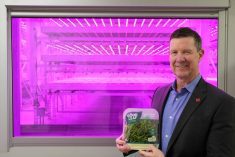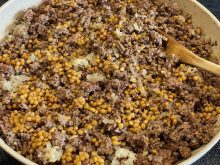Ghost towns come to life in southwestern Saskatchewan, paying homage to cowboys and tightly knit communities
MAPLE CREEK, Sask. — The notion of cowboys sitting around a campfire, wagons circled, isn’t that far flung at Ghostown Blues.
The picture-perfect setting of this bed and breakfast just outside southwestern Saskatchewan’s best-known cow town could be a western movie set. And that wouldn’t be a stretch either considering owner Greg Hisey’s resume.
This little settlement along the highway to Fort Walsh is a collection of wagons, vehicles and buildings rescued from times past. The oldest is from 1895.
Here, the ghost towns of Hatton, Walsh, Govenlock, Senate, Vidora and Robsart are still alive and welcome guests from spring to fall.
Read Also

Nutritious pork packed with vitamins, essential minerals
Recipes for pork
Hisey began constructing Ghostown Blues in 2008 next to the house where he and his wife live, and welcomed guests two years later.
“I spent years restoring ranches and barns when I was cowboying,” says Hisey of how he began preserving the past.
Raised in the United States, he was indeed a cowboy, a pro bull rider and a stunt double for Jon Voight in Return to Lonesome Dove.
He had a career travelling the world in industrial construction, too, even while maintaining his Maple Creek base.
Hisey can tell you the history of every building and wagon on the property, including the main outhouse. (It’s modern now, but was a four-holer from the Dixon ranch.)
Guests can stay in one of the sheep wagons, built to accommodate those who tended the tens of thousands of sheep that helped establish agriculture in the early days. These wagons were the inspiration for Hisey’s vision.

As well, there is the thresherman’s wagon, a cook car used to feed the crews that travelled from farm to farm at harvest.
There are the Twisted Sister and the Cowgirl Deluxe that perch on top of 1940s era trucks.
And there are cabins named for the aforementioned ghost towns. Hisey has added on to a couple of them and outfitted them with cowboy chic décor. They are all insulated, with heating and air conditioning, to keep guests comfortable.
You won’t find TV here. There’s no pool or water slide.
Guests have to share the bathrooms, and they don’t get keys to their accommodation.
“That unnerves a lot of people,” Hisey said, but it’s part of the plan that really wasn’t a plan in the beginning.
“It’s doing what it was designed to do,” he explains. “People have moved to cities and there’s no sense of communities anymore. Here, they see a little sense of community.”
The peaceful grounds are meticulously clean; a couple of Border Collies keep a watchful eye for someone who might throw a stick.
It’s the kind of place where a book is the best thing to bring.
Hisey, whose business won a SaskTourism service award in 2017, said Ghostown Blues isn’t part of a trend toward what he calls “fast food tourism.” Some never leave the property except to find meals.
The B-and-B’s capacity is 27, although for weddings and family reunions it could accommodate about 120.
Breakfast is served in the lodge, a former church built in 1912, which Hisey and his son restored to serve as a communal gathering space. It also hosts concerts from time to time.
Two full-time staff and one part-time worker keep the business going from May to September.
Hisey doesn’t market his business. He says he wanted a place that people had to seek out.
“We’re not for everybody. The people that have found us, it’s the right people.”
For more information, check out ghostownblues.com.


















